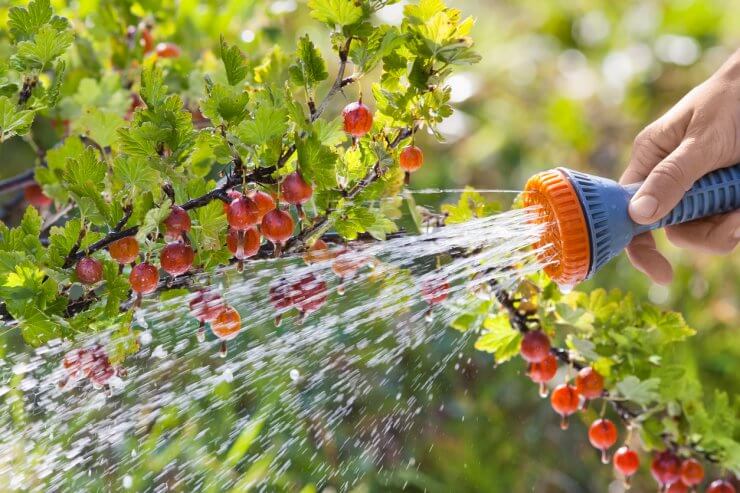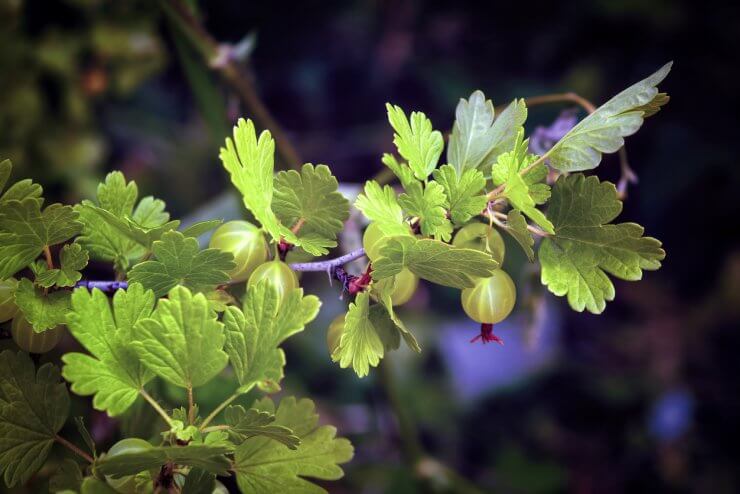
Watering a gooseberry bush
Water
Once your gooseberry bushes are settled in—whether it’s in a container, a raised bed, or open ground—consistency is key when it comes to watering. Gooseberries like about an inch of water every 10 days. If your weather is drier than that, you’ll need to get out the garden hose to give your gooseberries a long, slow drink, or turn on the soaker hose for a while. Just don’t let your gooseberries get wet feet.
It’s best to water in the morning, so your bushes can soak up that deep drink of water and put it to work growing gooseberries. Watering in the morning is also helpful in the event you water more than the roots. If the leaves and growing fruit get wet, the early sun will help burn off the moisture.
Mulch is helpful to conserve water and deter weeds. You can lay down a 2- to 3-inch layer of wood mulch, compost, or grass clippings to help with water retention.
Weeding
Gooseberries have a shallow root system, so you need to be gentle when you weed. If you’ve used weed-free soil and well-rotted organic matter, and laid down mulch, you shouldn’t have a big weed problem.
Properly preparing your soil is an excellent preventive measure against the emergence of weeds. If you’re planting your gooseberries in open land, you should be able to get most weeds cleared when you did the planting hole. You may only need to weed for the first few weeks after planting your gooseberries. That layer of mulch we suggested for water retention? It helps deter weeds, too.
Pruning
Pruning actually helps encourage more growth in your gooseberry plants. It also helps air out the bush and promote better air circulation. Better air circulation means less opportunity for disease.
In the spring, cut off all 3-year-old branches. Gooseberries produce their best on the spurs of canes 1 and 2 years old. Last year’s branches that you harvested from? Prune them down. Any weak or crowding branches should also be pruned.
If you’re growing your gooseberry as a bush, you can prune it to keep the same number of branches from each year. As your plant grows to be 4 years old and older, maintain it by keeping only branches that are 1, 2, or 3 years old for the best production. A healthy, mature gooseberry bush should wind up with about eight canes; each year, you’ll cut back the oldest canes to make way for new growth.
Fertilizer

Healthy gooseberries that were fertilized in the spring
Gooseberry bushes are not particularly heavy feeders, but they appreciate a little TLC in the spring. A balanced 10-10-10 fertilizer is a good choice. Check the package directions for how much fertilizer to apply, depending on your gooseberry’s size and age.
How often do you have to fertilize or water your gooseberry bushes? Do you have any particular challenges growing gooseberries? Please tell us your tips for nurturing healthy gooseberry bushes.


 Previous
Previous

